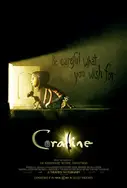Books like The Tell-Tale Heart
The Tell-Tale Heart
Published in 1850, Edgar Allan Poe’s The Tell-Tale Heart is one of the best known and most memorable short stories ever written. Since there are dozens of commentaries and reviews here and elsewhere on the internet, in the spirit of freshness, I will take a particular focus: obsession with an eye or eyes and compare Poe’s tale with a few others. In The Painter of Eyes by Jean Richepin, we encounter an obscure artist who sells his soul to the Devil in order to paint at least one masterpiece. There is a bit of writing attached to the corner of his great painting that reads: “The Devil has informed me as to the secret of painting eyes. That secret consists of decanting the life from the models one wishes to represent and fixing that life on the canvas. In doing that, one slowly kills the people whose portrait one paints. It is sufficient for me to know that I have made this masterpiece. I commend my soul to the prayers, in case the Evil One does not leave me the time.” The writing ends abruptly since death strikes the artist in mid-sentence - his masterpiece is a self-portrait.In The Gaze another story by Jean Richepin, the narrator peers through the window of a cell at a madman holding his arms spread, head uplifted, transfixed by a point on a wall near the ceiling. The doctor-alienist relates to the narrator how this inmate is obsessed with the gaze of eyes from an artist's portrait. "For there was something in that gaze, believe me, that could trouble not only the already-enfeebled brain of a man afflicted with general paralysis, but even a sound and solid mind." Turns out, the narrator discovers the doctor is also driven mad by these eyes. So much so, the doctor took a scissors to the painting. We read: “In front of me, a fragment of a painting, cut out of a canvas with scissors, showed me a pair of eyes: the eyes of the portrait that the alienist said that he had lacerated, the eyes darting that famous gaze – in which, indeed, the very soul of gold was alive.”The Enigmatic Eye by Moacyr Scliar is a most imaginative tale of a wealthy old man who becomes infatuated with a portrait of an aristocratic gentleman in the town’s museum. And what makes this portrait so infatuating? Why, of course – the gaze of the right eye, which is truly enigmatic. The old man has his close friend steal the portrait from the museum so he can put it in his attic and sit in front of the painting, pondering the enigmatic gaze round the clock. The servants think the old man mad but he could care less – he has exactly what he wants – the portrait with its enigmatic eye right in his very own attic. Unfortunately, something unexpected happens. Due to the attic’s heat and light, the painting begins to fade and then, over time, vanishes. The old man concludes there is only one thing for him to do – he buys some brushes and oils and begins re-painting the portrait, starting with the enigmatic eye. Turning now to Poe’s tale, the narrator insists he should not be taken for a madman; rather, he is dreadfully nervous causing his senses, especially his sense of hearing, to be heightened and sharpened. He goes on to convey how once the idea of killing the old man of the house entered his brain, he was haunted by the idea day and night. And why would he want to kill this old man, a man who never wronged him? We read, “I think it was his eye! Yes, it was this! He had the eye of a vulture – a pale blue eye, with a film over it.” What is it about a human eye, painted or real, when seen by someone who is mentally unstable? Perhaps part of the answer is given by contemporary Argentine author, Ernesto Sabato, when he says that hell is being the object of the gaze of another. Every one of Poe’s sentence is sheer perfection, building tension and suspense. For example, we read how the narrator, lantern in hand, secretly peers in at the sleeping old man at midnight. But then, one night, a noise wakes the old man and he sits bolt upright in bed. And what does the narrator do? We read, “I resolved to open a little – a very, very little crevice in the lantern. So I opened it – you cannot imagine how stealthily, stealthily – until, at length a single dim ray, like the thread of the spider, shot from out the crevice and fell full upon the vulture eye. It was open – wide, wide open – and I grew furious as I gazed upon it. I saw it with perfect distinctness – all a dull blue, with a hideous veil over it that chilled the very marrow of my bones; but I could see nothing else of the old man’s face or person: for I had directed the ray as if by instinct, precisely upon the damned spot.”Anybody familiar with the story knows the narrator’s actions and emotions escalate from this point. What I find particularly fascinating is how the narrator’s obsession and fixation with the eye, once there is no more eye to fixate upon, quickly shifts into a heightened sense of feeling and, of course, heightened hearing. What a tale; what an author – a masterpiece of suspense and horror.*The quotes from the two tales by Jean Richepin are taken from The Crazy Corner a collection of stories translated by Brian Stableford and published by Black Coat Press.



























